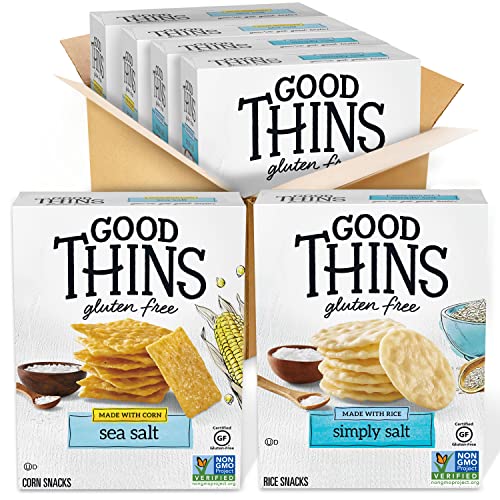Portion Control for Acid Reflux: Minimize Symptoms and Maximize Relief
You swore you wouldn’t eat so much this time, yet here you are again…overfull and dreading the reflux payback.
This is the thing about healthy eating: knowing what you ought to do and actually doing it are two very different things. That’s not exactly a news flash, but you’d be surprised at how often people think their inability to do something diet-wise is because they “need more information.” Most often, that’s not true. What’s often needed is greater attention to eating habits and the skills that support healthy eating habits.
Trimming back portions
Have you noticed how servings sizes of foods have gotten bigger compared to when you were young? It’s true the sizes of packaged foods and restaurant meals have grown, impacting how much food we typically serve ourselves at home, too. Not surprisingly, the bigger the food portion, the more we eat. And many of us are now in the habit of eating bigger amounts and more food than we actually need.
If you’ve got acid reflux or GERD, consistently keeping portions in check (and decreasing overeating) can go a long way toward minimizing your symptoms. Over time, scaling back on food portions can also promote weight loss, which is also helpful for decreasing acid reflux. Luckily, learning to serve yourself and eat portions that are appropriate for your particular health needs is a skill you can learn.
Eat smaller meals more often.
The popularity of intermittent fasting and OMAD (one meal a day) eating protocols among consumers might tempt some with their promises of near-effortless weight loss, but these styles of eating are not suitable for people who have frequent acid reflux. In fact, one of the common recommendations for minimizing acid reflux is to consume mini-meals and to have them more often than just the standard three times per day.
Eating large meals (consuming big portions) is a risk factor for acid reflux. And generally, the less frequently you eat, the greater the chance that the meals will be large. Also, the fewer meals you eat, the more likely you are to be very hungry and eat quickly—also a risk factor for reflux.
Think about how your food is divided between eating occasions throughout the day. If you skimp on breakfast and lunch meals, you likely make up for that by eating a larger dinner, thereby setting yourself up for an increased chance of reflux—especially if bedtime isn’t too far off.
Easy ways to manage food portions
You don’t need a food scale, special containers, or anything complicated to keep your portions under control; a few simple guidelines will do.
- Learn to use your hand as a guide to portion sizes - your hands can be used to help you estimate portion sizes. The size of your palm, the size of your thumbs, and the size of your fist are good visual guides.
- Check serving sizes on packaged food and beverage labels - knowing how to read a food label is a good skill for helping keep portions in check. Many packaged foods contain more than one serving in what otherwise appears to be a single serving, so it’s essential to read labels.
- Keeping proportions of the food components of your meal in good balance - this is easier if you follow the MyPlate guidelines from the USDA. You can get a personalized healthy eating plan that includes the number of portions from each food group that are appropriate for you, along with recipes and portion size tips.
- Start practicing simple mindful eating behaviors - many of us eat rather mindlessly, making it difficult to track how much we’ve eaten. Learning to apply mindfulness principles like slowing down your eating pace, chewing food thoroughly, and minimizing distractions during eating can help you manage portions and eat a more appropriate amount of food overall.
- Centers for Disease Control and Prevention (2022, June 3). How to avoid portion size pitfalls to help manage your weight. U.S. Department of Health and Human Services. Retrieved July 21, 2023.
- National Institute on Aging (2022, February 28). How much should I eat? Quantity and quality. National Institutes of Health. Retrieved July 21, 2023.
- Jarosz, M., & Taraszewska, A. (2014). Risk factors for gastroesophageal reflux disease: the role of diet. Przeglad gastroenterologiczny, 9(5), 297–301.
- Yamamichi, N., Mochizuki, S., Asada-Hirayama, I., Mikami-Matsuda, R., Shimamoto, T., Konno-Shimizu, M., Takahashi, Y., Takeuchi, C., Niimi, K., Ono, S., Kodashima, S., Minatsuki, C., Fujishiro, M., Mitsushima, T., & Koike, K. (2012). Lifestyle factors affecting gastroesophageal reflux disease symptoms: a cross-sectional study of healthy 19864 adults using FSSG scores. BMC medicine, 10, 45.
- Zhang, M., Hou, Z. K., Huang, Z. B., Chen, X. L., & Liu, F. B. (2021). Dietary and Lifestyle Factors Related to Gastroesophageal Reflux Disease: A Systematic Review. Therapeutics and clinical risk management, 17, 305–323.
- Handy guide to serving sizes. (n.d.). San Francisco State University. Retrieved July 21, 2023.
- U.S. Food and Drug Administration (2022, February 25). Serving size on the new Nutrition Facts label. U.S. Food and Drug Administration. Retrieved July 21, 2023.
- U.S Department of Agriculture. MyPlate. Center for Nutrition Policy and Promotion (n.d.). Retrieved July 20, 2023.
- North Carolina Cooperative Extension (2018, November 20). Mindful eating and portion control. Expanded Food and Nutrition Education Program. Retrieved July 21, 2023.



















Comments
Join The Conversation...